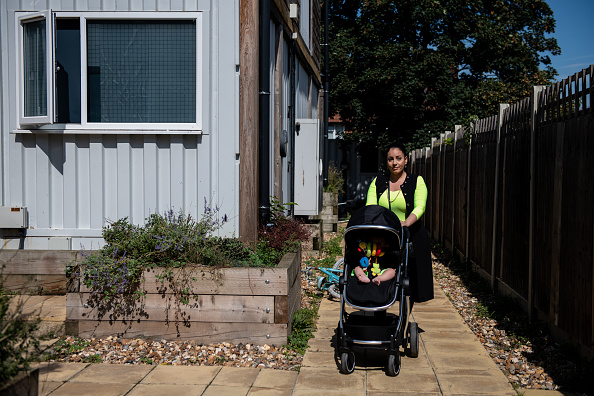If we don’t fix London’s housing, families will get stuck in temporary accommodation

This coming winter will be hard for millions of Londoners, with energy costs and inflation hitting almost everyone. But it will be harder still for the thousands of families stuck in temporary accommodation who don’t have a permanent home.
The numbers affected are staggering – 59 per cent of all English households in temporary accommodation are in London, including over 80,000 children. This is about the same as the number of children in the London borough of Brent.
People end up in temporary accommodation when they become homeless and their local council is obliged to find them somewhere to live, but doesn’t have any permanent home available straight away.
They might end up in temporary accommodation for a few days – or it might be a lot longer. It might be a bright, clean flat near to their children’s school and to the adults’ workplace. Or it might mean the whole family being squeezed into one room, queuing for the kitchen and the toilet with people they don’t know, with children trying to do their homework while their younger siblings play and their parents trying to keep everything clean. And from this room it might take an hour and a half on two buses – or sometimes even longer – to get to school.
As so often in London, the problem comes down to housing supply. Right to buy policies and reductions in social housebuilding mean that waiting lists for a council flat or house can be years long, so families on low incomes are forced to rent privately. But private rents are high and rising – if people have to leave their home because the landlord wants to sell it, or has put the rent up, they often find it hard to find a new one.
Families and individuals become homeless and ask their council for help, but because of the pressure on social housing, councils often don’t have properties of their own available, so they are forced to find properties in the same, expensive, rental market. Private landlords do well out of this, getting hundreds of pounds a week of taxpayers’ money for their properties – but no one else does.
We expect more people to need temporary accommodation in London in the next few months as the cost of living crisis bites. Looking back further, the number of households using it in London has fluctuated over the last three decades. It goes down when benefits are relatively more generous, when more social homes are built, and when governments decide to give the issue high priority.
The success of the “Everyone In” programme to end rough sleeping during the worst days of the pandemic shows the potential of concerted efforts: for a short period, rough sleeping was almost eliminated.
It shows that families being stuck in temporary accommodation is not inevitable: in the short term, increasing benefits and sorting out some of the unfairness in the welfare system would mean less families becoming homeless.
In the longer term, building more social and affordable homes would take the pressure off the system, meaning homeless families could find a home much faster. Building more homes in our crowded city isn’t straightforward, but the gains – especially for young families – could be huge.